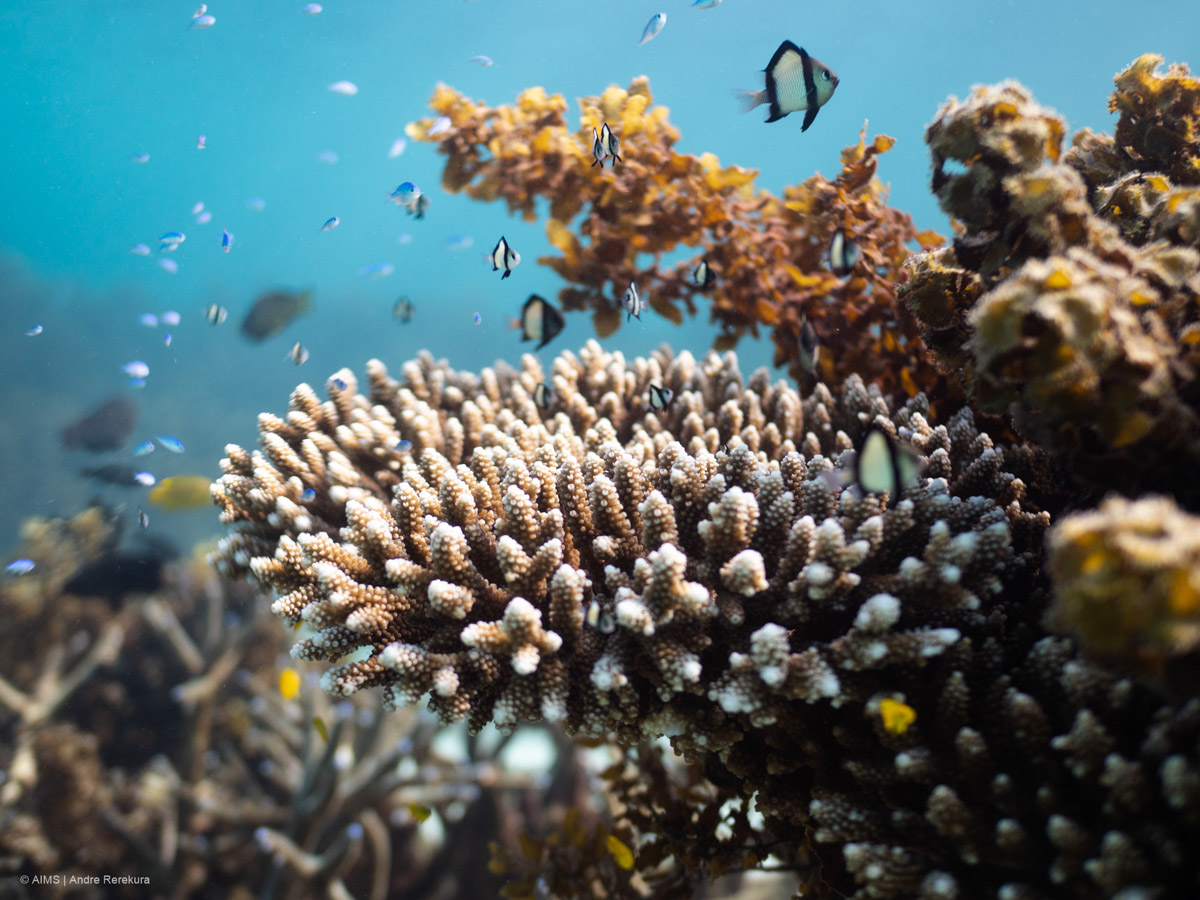In a new research project, scientists are broadcasting ‘reef songs’ underwater to attract baby fish to degraded reefs – investigating if the partnership between corals and fish can help repair coral reefs.
The world’s coral reefs are declining, and climate change is responsible for most of this loss. As temperatures rise, marine heatwaves are occurring more frequently, and cyclones are becoming more intense. This leaves coral reefs with fewer opportunities to recover.
The Australian Institute of Marine Science’s (AIMS) project lead Dr Mark Meekan said coral reefs are struggling to recover between disturbances, and this project could speed the growth of corals during these critical recovery windows.
The Reef Song project, undertaken at Ningaloo Reef and the Great Barrier Reef, is the first to explore if attracting fishes to settle on reefs via sound can help coral reefs recover.
“This whole-of-ecosystem approach is exploring the best of nature – the beneficial relationship between coral and fish,” he said.
“Sound is a key part in making that magical partnership happen. We need the sounds that the fishes are listening for, to lure them in.”
What is a ‘reef song’ and why do fish care?
A healthy coral reef is not a quiet coral reef. When fishes, crabs, shrimps and other invertebrates forage, hunt, feed, groom and mate on a reef, they’re creating a distinct melody made up of pops, grunts, crackles and croaks – orchestrating a coral reef's signature sound.
Every reef is made up of different sounds, of low and high frequencies, signalling the health of the reef. It is this melody of a healthy coral reef – this ‘reef song’ – that AIMS researchers will be broadcasting underwater.
But why?
AIMS acoustic scientist Dr Miles Parson said reefs without a loud reef song attract less fish, and less fish on a reef means less coral growth.
“Way out in the ocean fish larvae are listening for distinct and vibrant sounds of coral reefs. They’re searching for a healthy reef to settle on,” he said.
“Our previous research suggests fish larvae move to reefs with loud healthy coral reef sounds.
“But more and more reefs are struggling, which means they are losing this loud and unique reef harmonies that attract these fish.”
Why do fish matter in coral reef recovery?
Coral reefs are an incredibly complex ecosystems, full of mutually beneficial relationships that rely on each other to survive. Fish species depend on corals for food and habitat, and in turn, fish help corals replenish.
“Many reef fish species play a profound cleaning role, where they scrape, clean and graze areas that expose perfect surfaces for baby coral to settle and grow. The nutrients in fish poo also fertilises coral, helping them grow faster,” Dr Meekan said.
“You can think of fish as excellent coral farmers or gardeners, allowing reefs to reach greater coral coverage in a shorter period.
“We know the coral and fish partnership is beneficial, but what we’re trying to find out is exactly how fast can fish speed coral to maturity.”
How does the Reef Song experiment work?
The five-year project is in its initial stage. Scientists are establishing 60 patch reefs at Ningaloo Reef to act as the experimental sites. These patch reefs have been assembled by the science team and are a collection of coral rubble and live fragments of two key species.
Using underwater microphones, the science team recorded various healthy coral reef soundscapes. From here, underwater speakers will play a reef song at selected patch reefs, so scientists can see what fish are attracted, how long they stay, and how fast each coral site grows, compared to the sites without sound.
“We want to find out exactly what species like what sounds, so we can fine tune our song to attract the most beneficial fish for degraded reefs,” Dr Parsons said.
Each of these 60 sites will be monitored through photogrammetry techniques to track how the corals grow over time.
“What we expect to see is the reefs with baby fish will have corals growing much faster,” Dr Meekan said.
“The results of this project could inform reef managers with techniques that can enhance reef recovery and adaptation – not only here in Australia, but world-wide.”
Australian Coral Reef Resilience Initiative
Reef Song is one of two projects under the Australian Coral Reef Resilience Initiative (ACRRI), which is jointly funded by AIMS and BHP.
ACRRI is a two-fold approach, investigating underwater acoustics through the Reef Song project at Ningaloo Reef in Western Australia, and the latest coral re-seeding techniques under the Keppel Islands Coral Project on the Great Barrier Reef in Queensland.
Together the two projects intend to speed up the natural process of tropical reef growth and recovery by simultaneously exploring coral seeding and the beneficial partnership between corals and fish.



